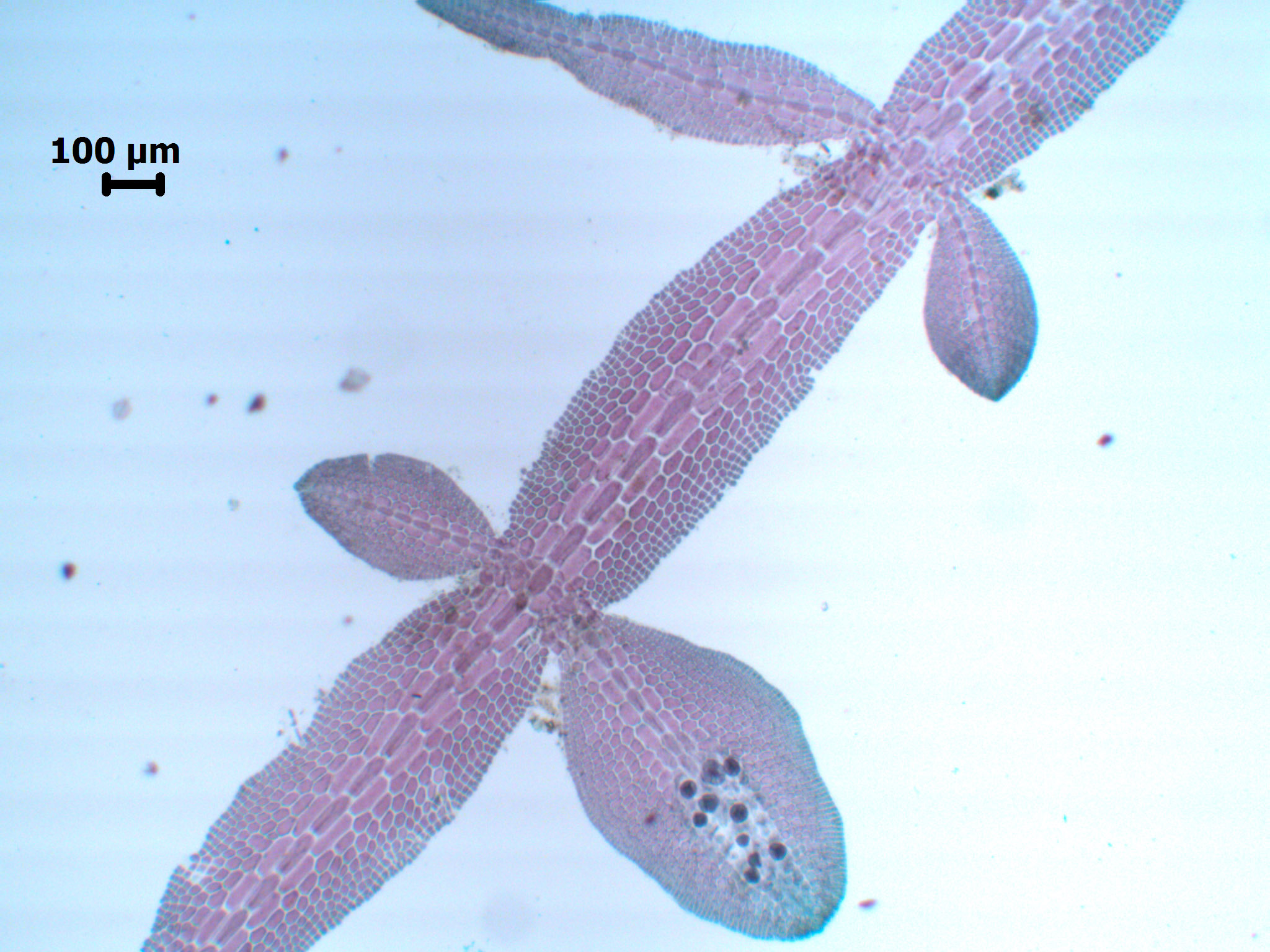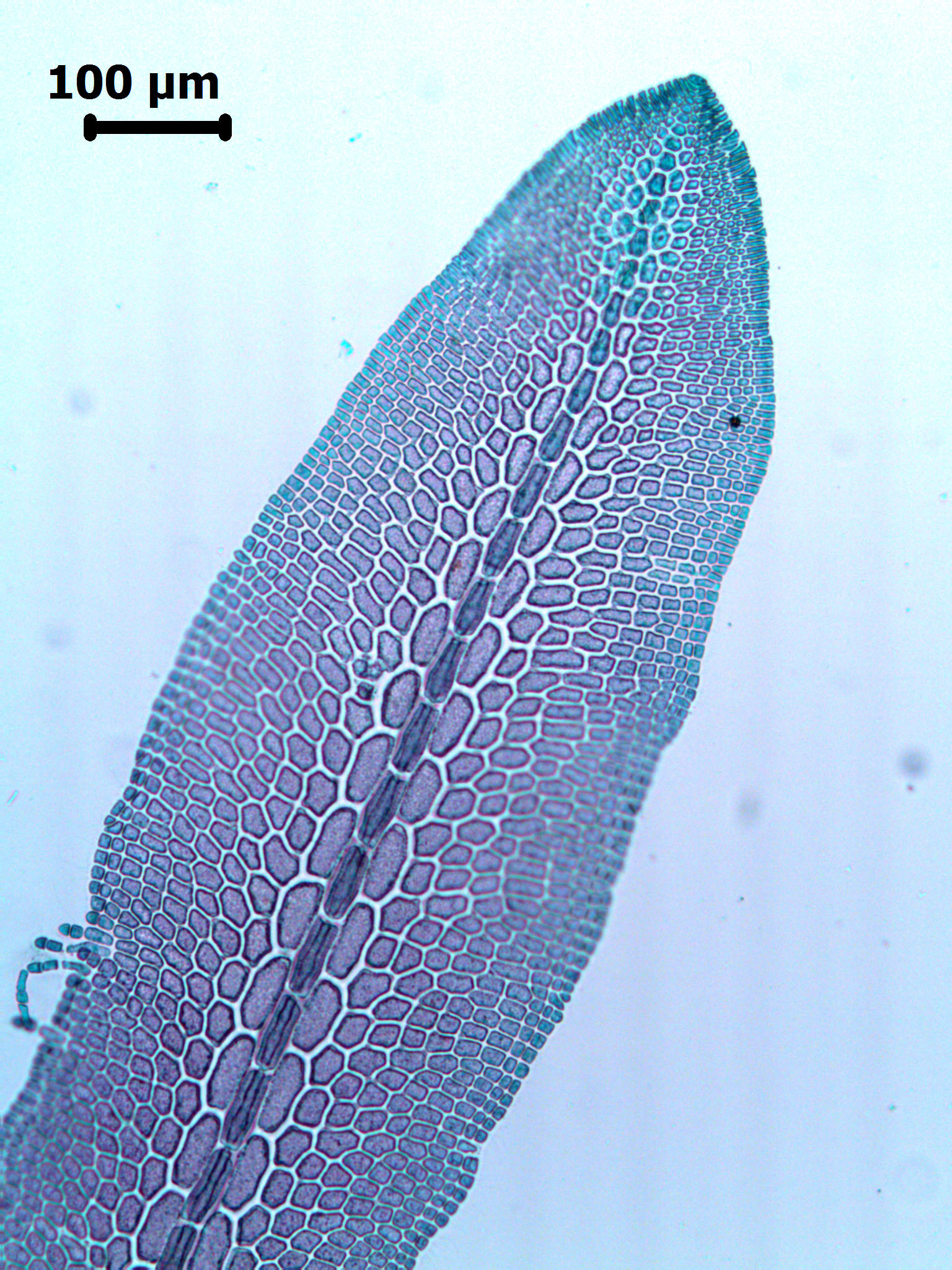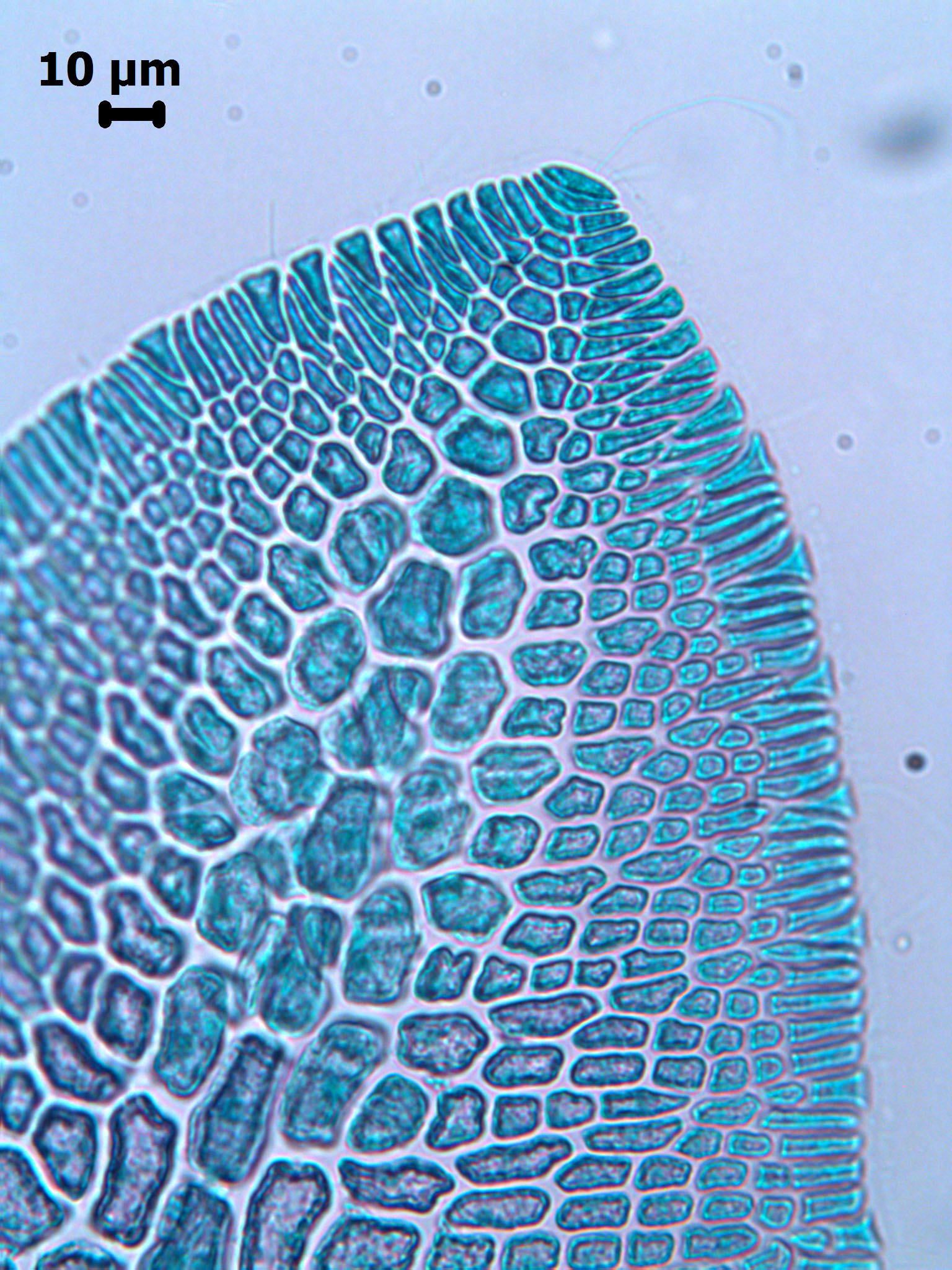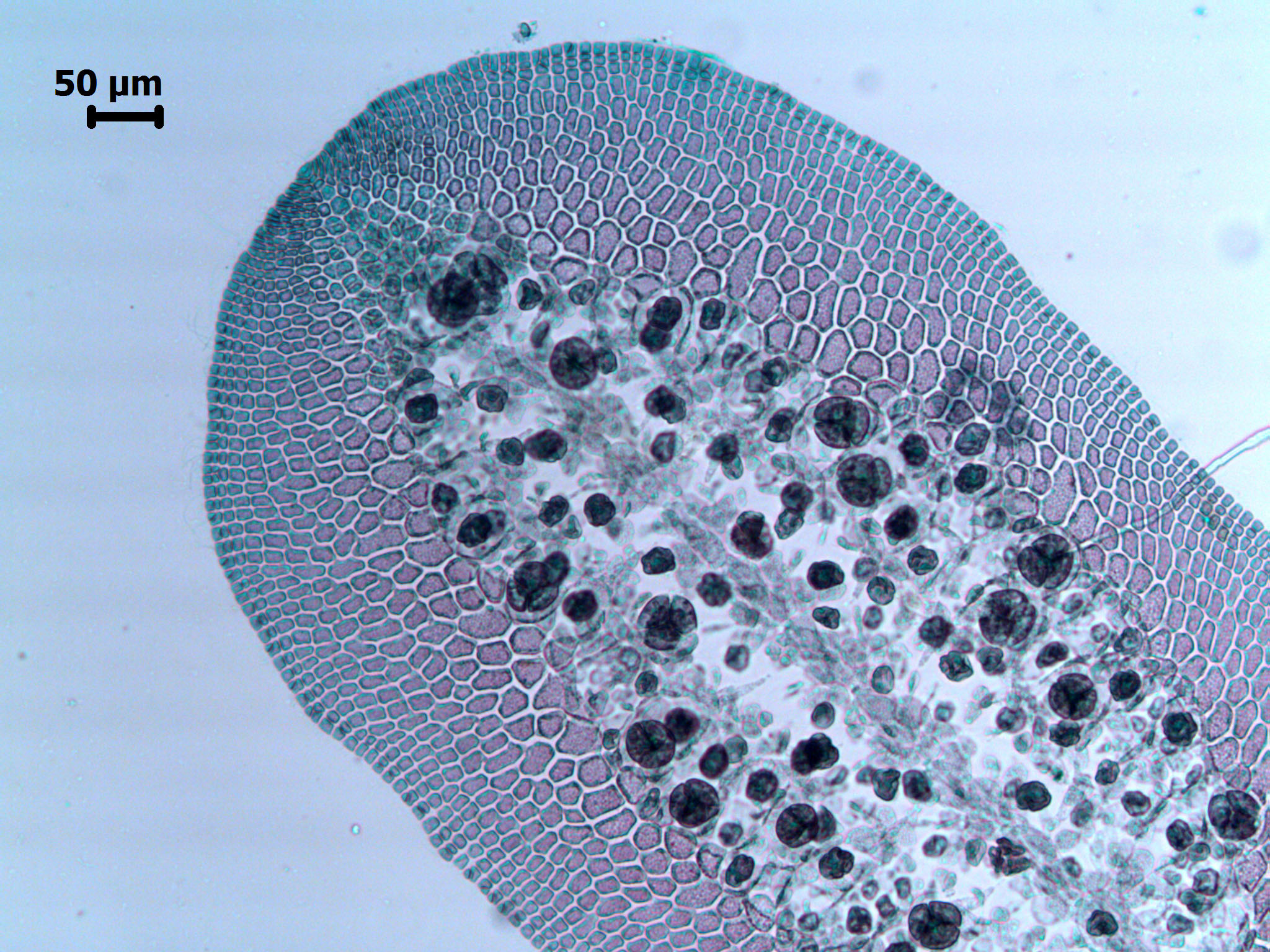Seaweeds of the South African South Coast


Order Ceramiales
Family Delesseriaceae
Hypoglossum imperfectum Stegenga, Anderson and Bolton 2001: 157
Plants red, minute (to about 5 mm), comprising creeping blades bearing slightly larger lateral to upright blades. Creeping axes foliar, comprising lanceolate to ovate sections up to 1.2 mm long and 0.5 mm wide, separated by regular constrictions where tufts of multicellular rhizoids arise ventrally (mainly from the blade wings) and attach thallus to the substratum. Lateral blades arising endogenously at constrictions from dorsal sides of the midrib, usually in slightly to very unequal pairs. Laterals either developing into new creeping blades or into upright blades that remaining unbranched and becoming fertile. Fertile blades generally larger (to 3.3 mm long and 1.6 mm wide) than creeping blades, and with blunt to slightly depressed apices. Blades monostromatic except for midrib and reproductive sori.
Tetrasporangia about 45 µm in diameter, tetrahedrally divided, arranged in single elongate sorus per blade, covering most of blade length and about one third of width. Mature cystocarps not seen.
Collections, ecology and regional distribution
Known only from a single collection growing on a Bryozoan at 24 m depth in Tsitsikamma National Park (32).
Type locality: Middelbank reef, Tsitsikamma National Park (Stegenga et al. 2001).

Hypoglossum imperfectum (stained, slide-mounted).

Hypoglossum imperfectum, detail of cells.

Hypoglossum imperfectum blade apex.

Hypoglossum imperfectum with tetrasporangial sorus.
References Hypoglossum
Stegenga, H., Anderson, R.J. & Bolton, J.J. 2001. Hypoglossum imperfectum nov. spec. (Rhodophyta, Delesseriaceae), from the South African South Coast. Botanica Marina 44: 157-162.
Cite this record as:
Anderson RJ, Stegenga H, Bolton JJ. 2016. Seaweeds of the South African South Coast.
World Wide Web electronic publication, University of Cape Town, http://southafrseaweeds.uct.ac.za; Accessed on 07 December 2025.